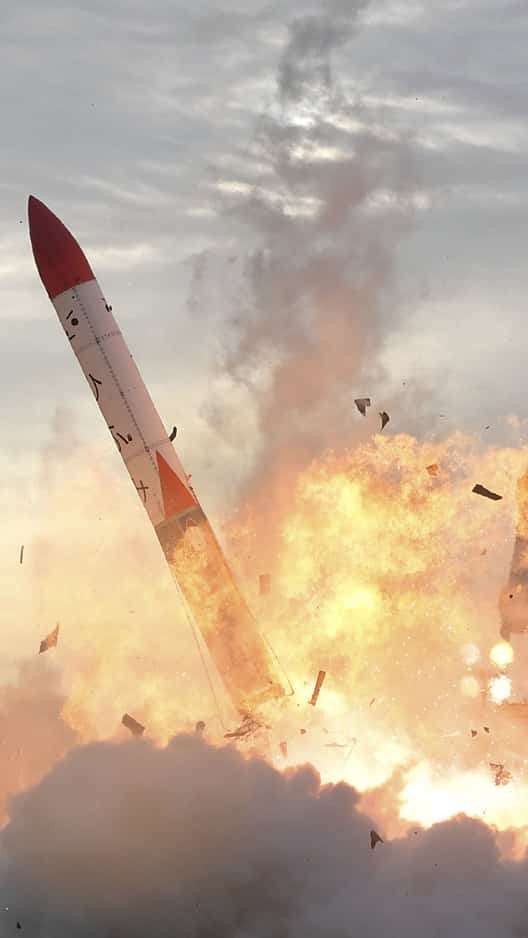SpaceX Starship: Learning From Past Launch Failures

Table of Contents
Analyzing the First Starship Launch Failure (SN8)
The first high-profile Starship prototype, SN8, ended its test flight with a spectacular, yet informative, "Rapid Unscheduled Disassembly" (RUD). RUD, in simpler terms, means the vehicle didn't survive the test flight as intended. While a failure, SN8 provided crucial data.
Rapid Unscheduled Disassembly (RUD): A Necessary Step
This RUD, however, wasn't a complete loss. The controlled descent and successful execution of several maneuvers provided valuable data. Analyzing this data revealed several key areas needing improvement:
- Engine Issues: Problems with engine performance and throttling during the descent contributed to the eventual RUD.
- Aerodynamic Instability: The SN8's aerodynamic profile proved less stable than simulations predicted during the critical descent phase.
- Insufficient Propellant: Calculations regarding propellant management needed refinement to ensure sufficient fuel for the complete landing maneuver.
The in-flight telemetry data, meticulously collected throughout the flight, was instrumental in pinpointing these technical challenges. This data-driven approach forms the cornerstone of SpaceX's iterative development process.
Subsequent Starship Prototype Failures (SN9, SN10, SN11): Common Threads and Iterative Improvements
The subsequent Starship prototypes, SN9, SN10, and SN11, also experienced RUDs, but each failure provided additional insights and spurred significant improvements.
Common Threads and Iterative Improvements: A Cycle of Learning
Despite different causes contributing to each RUD, several common threads emerged, revealing areas requiring concentrated development efforts:
- Engine Performance and Propellant Management: SpaceX made substantial improvements to engine reliability and optimized propellant distribution systems across multiple prototypes.
- Flight Control Systems and Software: The flight control algorithms and software underwent significant upgrades, improving responsiveness and stability during crucial maneuvers.
- Simulations and Testing: The importance of rigorous simulations and ground testing became even more apparent, allowing SpaceX to identify and address potential issues before they manifested during flight. These tests incorporated data from previous failures, creating a continuous feedback loop.
The Importance of Data Analysis and Simulation in SpaceX's Approach
SpaceX's approach to development relies heavily on data analysis and sophisticated simulations. This meticulous approach is crucial for identifying and mitigating risks.
The Role of Telemetry Data: Transforming Failures into Knowledge
The role of telemetry data gathered during each flight cannot be overstated. SpaceX employs:
- High-Speed Cameras and Sensors: A multitude of sensors and high-speed cameras provide a comprehensive view of the vehicle's performance in real-time.
- Post-Flight Analysis and Simulation Refinement: This wealth of data is fed into sophisticated post-flight analysis software, refining simulation models and improving future design iterations.
- Advanced Software for Data Analysis and Modeling: SpaceX leverages cutting-edge software to process and interpret vast amounts of data, uncovering patterns and subtle anomalies that might otherwise be missed.
Future Starship Launches and Mitigation Strategies
Lessons learned from the previous SpaceX Starship launch failures are directly informing the design and testing of future prototypes.
Lessons Learned and Future Development: A Path Forward
SpaceX is focusing on several key areas for improvement:
- Structural Integrity and Heat Shielding: Improvements in materials science and manufacturing techniques are enhancing the structural integrity and heat shielding capabilities of the Starship.
- Launch and Landing Procedures: Refined launch and landing procedures, informed by past failures, are aimed at enhancing safety and reliability.
- Rigorous Testing and Simulation: The commitment to rigorous testing and simulation remains unwavering, ensuring that future launches are safer and more successful.
Conclusion
The SpaceX Starship launch failures, while seemingly setbacks, are integral parts of a rapid iterative development process. The emphasis on data analysis, sophisticated simulations, and continuous improvement based on real-world testing is driving progress. Key takeaways include the iterative nature of development, the pivotal role of data analysis in identifying problems, and the necessity of continuous refinement through simulation and testing. Follow the progress of SpaceX Starship and witness the continuing evolution of this groundbreaking technology, tracking SpaceX Starship development, monitoring SpaceX Starship progress, and anticipating SpaceX Starship future launches.

Featured Posts
-
 Tuis New Adults Only Cruise Line A Game Changer For The Cruise Industry
May 29, 2025
Tuis New Adults Only Cruise Line A Game Changer For The Cruise Industry
May 29, 2025 -
 Cota Moto Gp Mir And Marini Aim For Top Results
May 29, 2025
Cota Moto Gp Mir And Marini Aim For Top Results
May 29, 2025 -
 Joshlin Smith And Co Conspirators To Face Sentencing In Human Trafficking Case
May 29, 2025
Joshlin Smith And Co Conspirators To Face Sentencing In Human Trafficking Case
May 29, 2025 -
 Nintendo Switch How Technology Finally Caught Up
May 29, 2025
Nintendo Switch How Technology Finally Caught Up
May 29, 2025 -
 Cidadaos Americanos Apoiam Projeto Da Cidade Space X Implicacoes E Futuro
May 29, 2025
Cidadaos Americanos Apoiam Projeto Da Cidade Space X Implicacoes E Futuro
May 29, 2025
